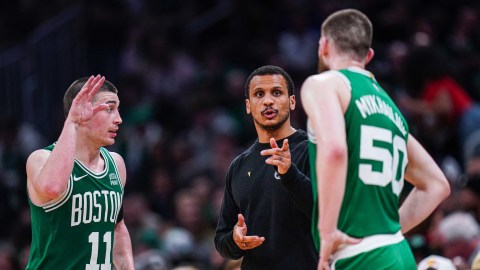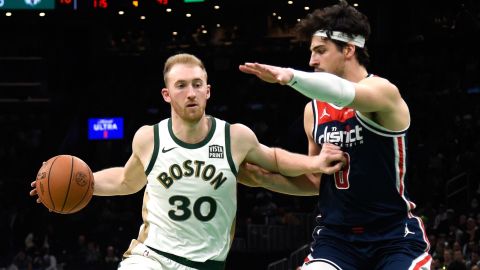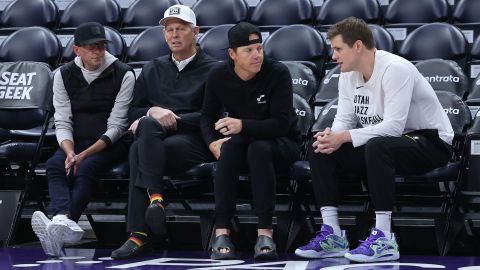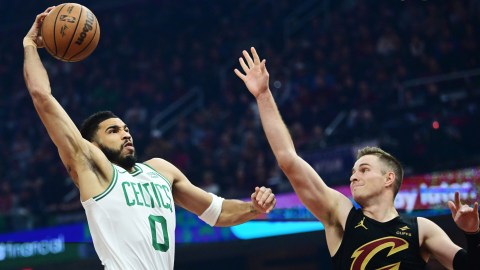 Brad Stevens would love to take the court next season with a big body to protect the rim. Or a gifted scorer ready-made to win an NBA scoring crown. Or a ridiculously athletic future All-Star with limitless potential.
Brad Stevens would love to take the court next season with a big body to protect the rim. Or a gifted scorer ready-made to win an NBA scoring crown. Or a ridiculously athletic future All-Star with limitless potential.
Stevens would like to have all three, but chances are, he won’t.
The Boston Celtics have no shortage of needs heading into the offseason, as evidenced by their 25-57 record. They are likely to have at least a top-six pick in the 2014 NBA draft in June, with an outside shot at landing the No. 1 selection. No matter where they pick, the Celtics will have some talent to choose from — and a relatively uncomplicated draft approach.
Celtics president of basketball operations Danny Ainge has typically been a “best player available” guy when it comes to the draft, and he has reiterated his position this offseason. Beggars can’t be choosers, and while the Celtics aren’t exactly beggars, they are in no position to be choosy when it comes to compiling talent.
Wherever the Celtics’ first pick lands after Tuesday’s draft lottery, they will not be eyeing one specific need, because there is no single, overriding need. They couldn’t keep opponents from scoring in the paint this season, but they couldn’t put the ball in their own hoop, either. Joel Embiid and Jabari Parker would each help with one area or the other. Neither addresses both deficiencies right away.
Ainge has his big board, and whichever player he has rated highest when the Celtics’ pick comes up, be it first or eighth, he will rightly take it. That could mean grabbing forward Julius Randle, despite the presence of Jared Sullinger and Kelly Olynyk already on Boston’s roster, or guard Dante Exum, even with Rajon Rondo manning the point at the moment.
The NFL draft was two weeks later than usual this year, so fans might not be out of football-draft mode. But the NBA is not the NFL, its efforts to popularize its own draft combine notwithstanding. NBA teams that draft for need, as NFL teams do, are headed for danger. That’s how Sam Bowie gets picked over Michael Jordan. The Portland Trail Blazers knew Jordan was better than Bowie in 1984, but they already had a budding superstar at shooting guard — thus robbing Portland fans of the dynamic duo of Jordan and Clyde Drexler.
In basketball, where an individual player can have such a significant impact on the game, teams must always, always, always draft for what they believe to be the best available talent. Team-building is nice, but it’s only useful once an executive knows that what he has isn’t as transformative as what he can get. If you can turn Al Jefferson, some picks and some young players into Kevin Garnett and Ray Allen to complement Paul Pierce, you do it. Otherwise, you take Jordan, pair him with Drexler and figure something out, either on the court or in the trading office.
Of course, “best available” does not only apply to players in the draft. Some observers believe the best player available on draft night this year will be Kevin Love. If so, expect Ainge to pursue the Minnesota Timberwolves forward with whatever assets are at his disposal.
No, Love would not protect the rim. Yes, he is a top-four scorer, but the Wolves’ struggles have shown he cannot carry an offense by himself. Yet the draft isn’t about acquiring the perfect player or addressing every need. It’s about getting the best talent at that moment, whoever it might be, and letting Stevens figure out how to utilize it. Having more talent than he knows what to do with is a problem a coach will take any time.



